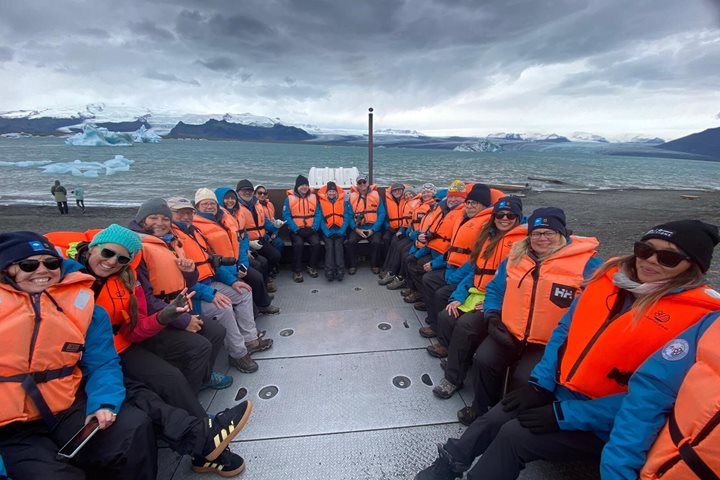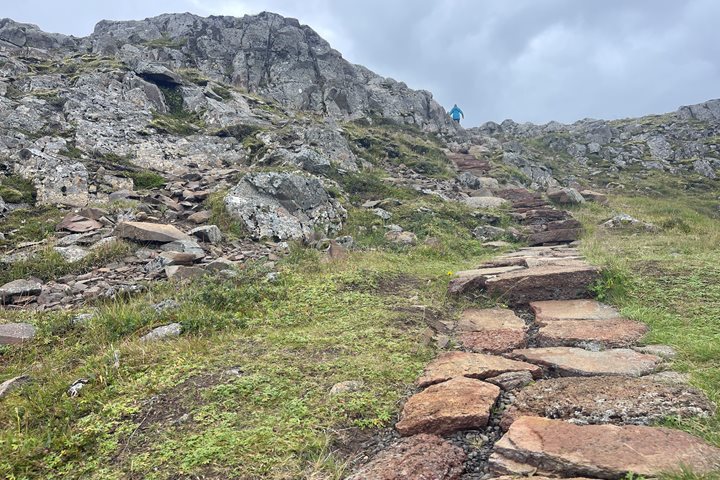The guests and crew of National Geographic Explorer arrived today in Djúpivogur, which is a typical small fishing village in the southeast edge of Iceland. We boarded a bus for an ice-themed day in southern Iceland.
Most of us went up on to the Skalafells glacier for a ride on snow vehicles. We walked on the glacier and saw crevasses in the ice. On the ride up and down from the glacier, we saw how the glacier is receding and thinning due to global warming, resulting in huge bare areas devoid of vegetation. We also saw pink snow, where algae has managed to live in between the snow crystals.
When we reached the world-famous Jokulsaron lagoon, we boarded an amphibious vehicle to cruise the ice-filled lake. This lake has thousands of gorgeous icebergs that broke off from the nearby Breithamerkur glacier that flows out of the Vatnajokul icecap. Many of the icebergs were brilliant blue, because the air-free ice absorbs the red end of the color spectrum of sunlight. Some of the icebergs had black volcanic ash moraines embedded in the ice. Our guide picked up a small iceberg from the water and we could see and feel the clear ice up close. There were thousands of arctic terns flying around the icebergs, feeding on small fish in the lagoon.
After the iceberg tour, we visited the nearby black sand beach where icebergs escaping from the lagoon wash up on the seashore. We walked along and photographed the clear icebergs that were melting into all sorts of shapes.
On the way home, we drove by 2,000-foot-high cliffs that used to be sea cliffs, but are now a mile inland due to post-glacial isostatic rebound of the Earth’s crust. There were huge talus piles (skree slopes) that have formed at the base of the cliffs since the end of the last ice age. There were also farms, horses, sheep, and the occasional church along the way. We also saw a tidal lagoon near Lon that had hundreds of whooper swans.
At the end of the busy travel day, we returned to the ship for Recap and dinner as the ship headed out to sea.






